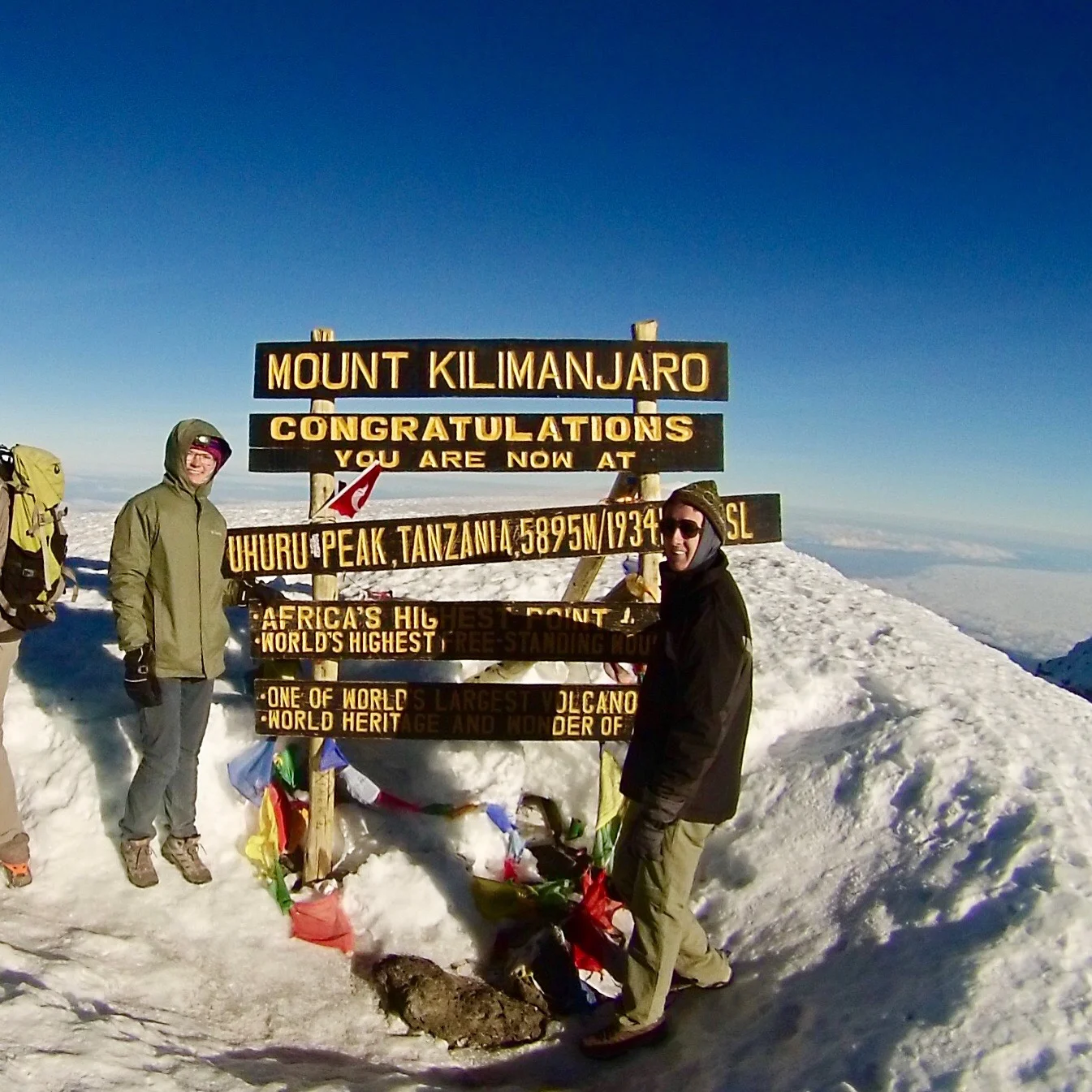Mount Kilimanjaro is one of the most iconic mountains in the world. Standing at 19,341 feet, it’s Africa’s highest peak and one of the Seven Summits. Climbing Mount Kilimanjaro is something countless people dream about, and while the climb is both physically and mentally exhausting, anyone can achieve this feat with hard work, commitment, and determination. To accomplish what’s sure to be one of the most fulfilling experiences of your life, preparation is key. Keep reading to find out what to pack and how to prepare for your journey to Mount Kilimanjaro.
Routes
One of the most important things to consider is which route is best for you. With 7 climbing routes, there is something for everyone—each route differs in difficulty, price, and scenery. Marangu is one of the most popular and offers hut accommodations, Rongai is considered the easiest, and Umbwe is the most challenging. Do some in-depth research on each route before making your decision. For more details on the Marangu Route (our favorite route), read our in-depth Kilimanjaro Marangu Route Itinerary.
Fitness
Although no special skill is required to climb Kilimanjaro, there’s a certain level of fitness you need. In the time leading up to your expedition, increase your activity. Walking, running, and cycling are all good ways to improve your fitness and prepare for the trek. It’s also important to check if there are any recommended or required vaccinations you need before leaving the country.
Guide
To climb Kilimanjaro, you must be accompanied by a registered guide. You can find a company operating out of Tanzania or the United States, such as Acanela Expeditions. Prices vary, and in addition to the guided hike often include porters, meals, and group gear. It’ll be important to contact your chosen guide company to learn the specific details and what gear they’ll be providing.
Climate
The most popular climbing seasons are December-March and June-October, but no matter when you set off on your trek, you’ll find a wide range of weather. While traveling from base to summit, you’ll come across diverse climates, from verdant rainforest to arid desert to the Arctic zone nearing the summit. It’s vital to keep these changes in mind when packing; layers are essential to ensure you’re prepared for every environment you’ll hike through.
What to Pack
Once all the details are settled and your departure is approaching, it’s time to figure out what to pack. Although it’s not often thought of as a particularly enjoyable activity, packing doesn’t have to be stressful—a little research can go a long way.
Travel Clothes
There’s a decent amount of traveling involved before you set out to hike Mount Kilimanjaro, and it’s best to separate your travel clothes from your hiking clothes. This guarantees comfortable traveling, and you can leave your travel luggage behind at a hotel or your guide’s office.
Climbing Gear
A day pack will allow you to keep essentials on you at all times, while a larger duffel bag will contain the rest of your items (and will be carried by a porter). Pay attention to how much you pack, as there are weight restrictions on duffel bags. You’ll also need a cold weather sleeping bag, a headlamp (don’t forget extra batteries) for moving around in the dark, hiking poles to help with stability, and waterproof hiking boots with good ankle support. Make sure to break in the boots before the journey by wearing them around the house with thick socks. There’s nothing worse than trying to break in a new pair of boots on your trek up the mountain!
Hiking Clothes
The number one thing to keep in mind is “layers.” Several thin layers are the way to go—you’ll be prepared for any weather the mountain throws your way. Warm top and bottom base layers are also recommended. When buying clothes, avoid cotton, which will keep you wet and cold. Instead, seek out moisture-wicking fabrics. Also pack waterproof pants and a jacket, convertible hiking pants for the varying climates, a fleece, warm hat, sunglasses or a sun-shielding hat, down jacket, gloves, hiking socks, and a balaclava. Be mindful of the time that’ll be spent at camp—a pair of comfortable shoes to wear around the site will give your feet a break from the heavy duty hiking boots.
Other Essentials
Aside from clothing and gear, other things you’ll want to take along include a water bottle and/or reservoir, camera, first aid kit, sunscreen, lip balm with SPF, and toiletries, such as deodorant and wet wipes. If you get particularly affected by cold temperatures, consider bringing hand and feet warmers. And for those who have trouble sleeping, ear plugs and an eye mask can be useful. Even if you aren’t someone who usually journals, this life-changing experience is so awe-inspiring that you’ll be glad you brought a pen and paper along. Lastly, include snacks to keep your energy up in-between the provided meals.
Above all, the most important thing to take along with you on this once-in-a-lifetime adventure is self-confidence and perseverance. By the time you reach Uhuru Peak, you’ll be amazed at your mental and physical strength. Good luck as you prepare to embark on this unforgettable, truly rewarding experience!
Featured Trips:



































Africa is an incredible continent. It’s diverse with contrasting landscapes from beaches to mountains, deserts to wetlands, and mountains to endless open savannah. The people are culturally enriched and have been living a unique way of life for centuries. You can witness wildlife up close and personal, unlike a regular zoo. Africa contains 54 countries overall some people have unfortunately never heard of. Here are five of Africa’s hidden gems you won’t want to miss out on.